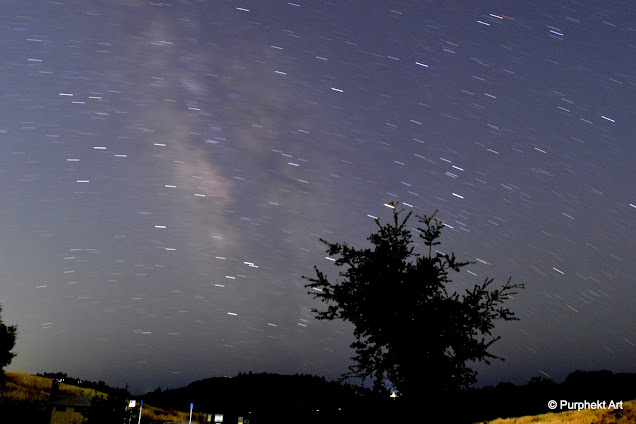I tried again. With limited success. I was able to do better in a different location. But, as would be the case, nature failed to cooperate. I got some better images of the Milky Way. But, I didn't catch a single meteor in my images. Save for a short trail at the very bottom of one image. Not even worth posting.
So here's one decent image I caught of the Milky Way. Pretty cool to think that the white-ish haze is really lots and lots and lots of really distant stars. Not too much different than our own Sun. Except that those stars are so, so far away that the light they emitted hundreds or even thousands of years ago is just NOW reaching us. So, traveling at the speed of light, that light is only NOW reaching us.
So, when we look up at the night sky, we are actually seeing history. We are are not seeing the way the universe is today. We are actually looking back in time. I find that kind of awesome when I stop and think about it.
Alright. Enough mind blowing for the moment. Here's the image I took of the Milky Way.
To see the complete image, you need to open it up by clicking on it.
A few days later, I decided to invest in an equatorial mount clock drive. I will be able to align the axis of the drive unit with the polar axis of the Earth. Then, I will be able to have my camera track the stars across the sky as the planet rotates.
This will keep the view of the sky for the camera stationary within the frame. I'll be able to make long exposures without any blurring of the stars. And, I will be able to make multiple exposures of the same patch of the sky and then, digitally, layer them together when I do my editing.
I have high hopes for this endeavor.


